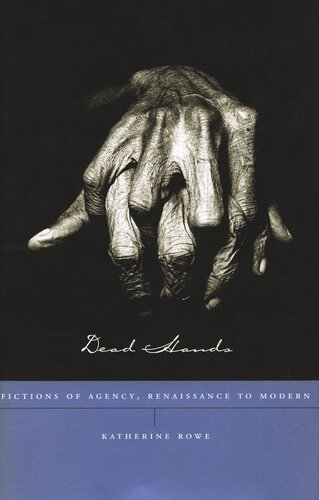

Most ebook files are in PDF format, so you can easily read them using various software such as Foxit Reader or directly on the Google Chrome browser.
Some ebook files are released by publishers in other formats such as .awz, .mobi, .epub, .fb2, etc. You may need to install specific software to read these formats on mobile/PC, such as Calibre.
Please read the tutorial at this link: https://ebookbell.com/faq
We offer FREE conversion to the popular formats you request; however, this may take some time. Therefore, right after payment, please email us, and we will try to provide the service as quickly as possible.
For some exceptional file formats or broken links (if any), please refrain from opening any disputes. Instead, email us first, and we will try to assist within a maximum of 6 hours.
EbookBell Team

5.0
48 reviewsDead Hands traces the fascinating career of a curious imaginative device: the wandering, disembodied, or ghostly hand. The author situates this familiar gothic convention in its richer literary and intellectual contexts, from early modern English drama through American fiction. Dexterously threading historical, theoretical, and formalist questions through readings of the plays of Shakespeare and Webster and the haunted tales of Maupassant, Le Fanu, and Twain, the book illuminates the complex social fictions invested in the faculties of the hand and tested by this evocative device. The book brings together a broad and eclectic array of "manual" iconography: from sixteenth-century religious imagery, medical anatomies, emblem books, witchcraft and folklore, to the popular metaphors of nineteenth-century industrialism, contemporary labor movements, and forensic science. Literary "dead hands" draw on and elaborate these varied traditions, to sometimes humorous and sometimes chilling effect. Across such disparate fields, the author argues, the figure of the "dead hand" represents a specific set of ideas about human agency: particularly, concerns about the fraught relationship between intentions (individual and collective) and meaningful action in the world. Severed and wandering, fictional dead hands challenge prevailing assumptions about bodily autonomy and control, directing us instead to the dependent, disabling, and self-alienating experiences of the acting self. In the process, they illuminate the changing assumptions about bodily experience—that "sense" of acting self—that sustain legal and political definitions of person in these different periods. Outlining the dynamic history of this device—first as it migrates from visual art onto the Elizabethan and Jacobean stage, and later as it prospers in Anglo-American gothic fiction—Dead Hands advances a comparatist reading of early modern and modern concepts of bodily action and its relation to interiority, authority, and identity.